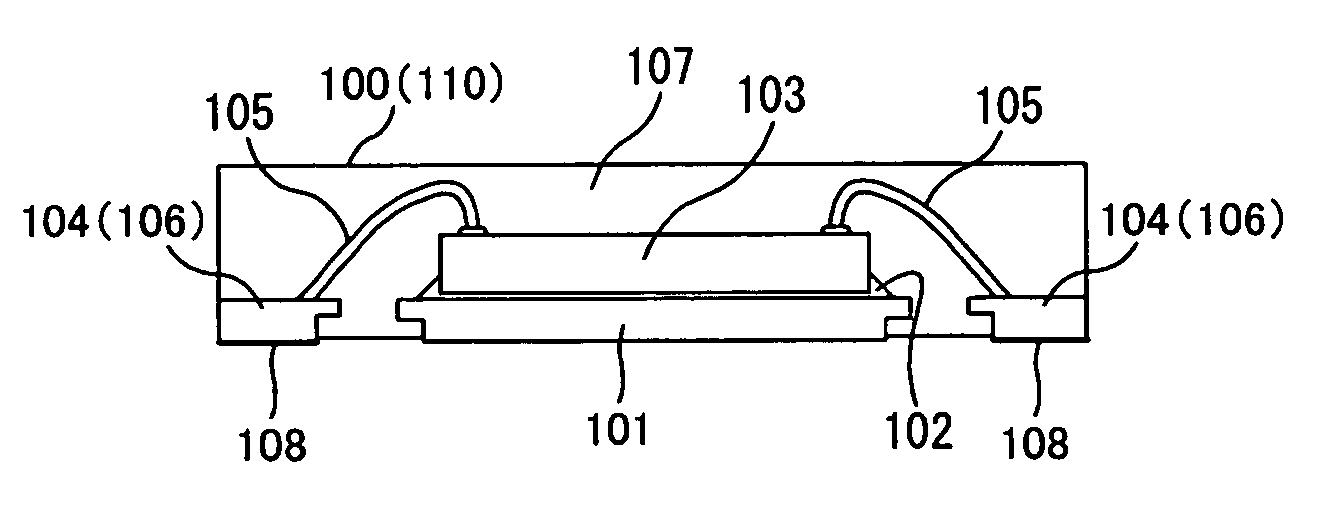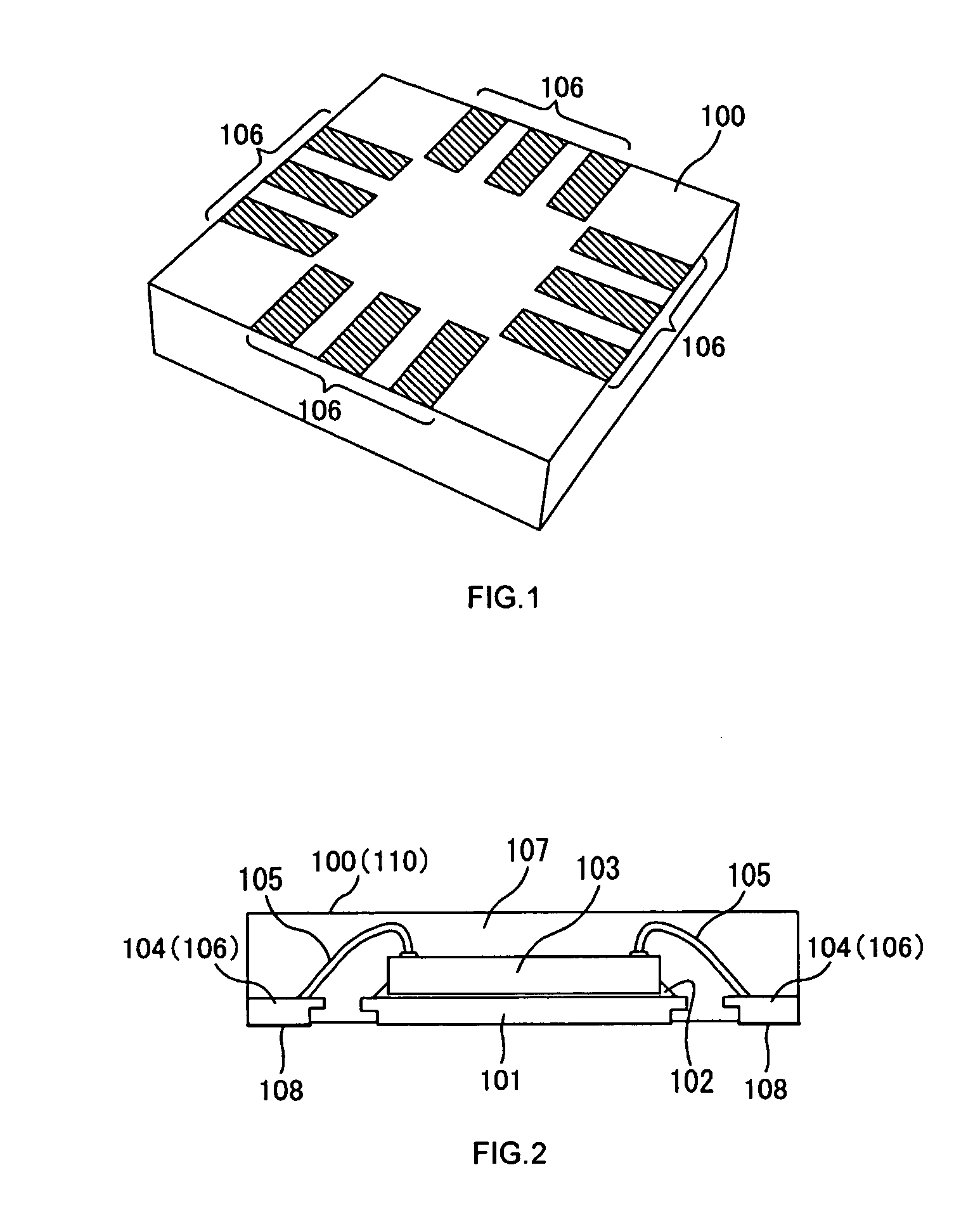Cutting method and method of manufacturing semiconductor device
a technology of cutting method and manufacturing method, which is applied in the direction of semiconductor devices, semiconductor/solid-state device details, electrical equipment, etc., can solve the problems of increasing the manufacturing defects of semiconductor devices, affecting the performance of semiconductor devices, and causing excessive material on the cut cross-section, etc., to achieve the effect of removing burrs
- Summary
- Abstract
- Description
- Claims
- Application Information
AI Technical Summary
Benefits of technology
Problems solved by technology
Method used
Image
Examples
Embodiment Construction
[0032] An embodiment of the present invention will be described hereinbelow with reference to the drawings.
[0033]
[0034]FIG. 1 is a perspective view showing an embodiment of a semiconductor device 100 manufactured based on a cutting method according to the present invention.
[0035] As the semiconductor device 100 according to the present invention, a nonleaded semiconductor device such as VQFN (Very thin Quad Flat Nonleaded Package) or VSON (Very Thin Small Outline Nonleaded Package) may be used, as shown in the same figure, in which external terminals 106 are exposed from the mounting surface (bottom surface), a surface that is joined to a printed circuit board via a joining agent. It is needless to say that the semiconductor device 100 according to the present invention is not limited to nonleaded semiconductor devices and that other CSPs (Chip Size Packages) such as BGA (Ball Grid Array) may be used. Package employing a printed circuit board or flexible printed board may also be ...
PUM
 Login to View More
Login to View More Abstract
Description
Claims
Application Information
 Login to View More
Login to View More - R&D
- Intellectual Property
- Life Sciences
- Materials
- Tech Scout
- Unparalleled Data Quality
- Higher Quality Content
- 60% Fewer Hallucinations
Browse by: Latest US Patents, China's latest patents, Technical Efficacy Thesaurus, Application Domain, Technology Topic, Popular Technical Reports.
© 2025 PatSnap. All rights reserved.Legal|Privacy policy|Modern Slavery Act Transparency Statement|Sitemap|About US| Contact US: help@patsnap.com



